ATI Radeon HD 5830 1GB DX11 Video Card Review
S.T.A.L.K.E.R.: Call of Pripyat
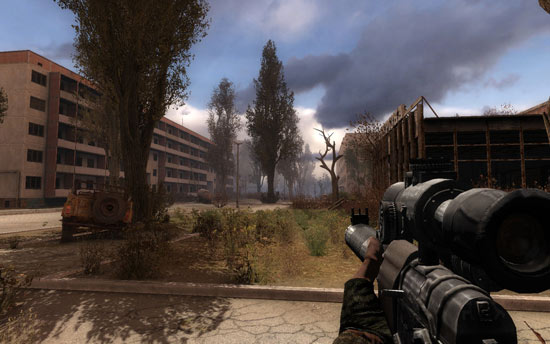
The events of S.T.A.L.K.E.R.: Call of Pripyat unfold shortly after the end of S.T.A.L.K.E.R.: Shadow of Chernobyl following the ending in which Strelok destroys the C-Consciousness. Having discovered the open path to the Zone’s center, the government decides to stage a large-scale operation to take control of the Chernobyl nuclear plant.
S.T.A.L.K.E.R.: Call of Pripyat utilizes the XRAY 1.6 Engine, allowing advanced modern graphical features through the use of DirectX 11 to be fully integrated; one outstanding feature being the inclusion of real-time GPU tessellation. Regions and maps feature photo realistic scenes of the region it is made to represent. There is also extensive support for older versions of DirectX, meaning that Call of Pripyat is also compatible with older DirectX 8, 9, 10 and 10.1 graphics cards.
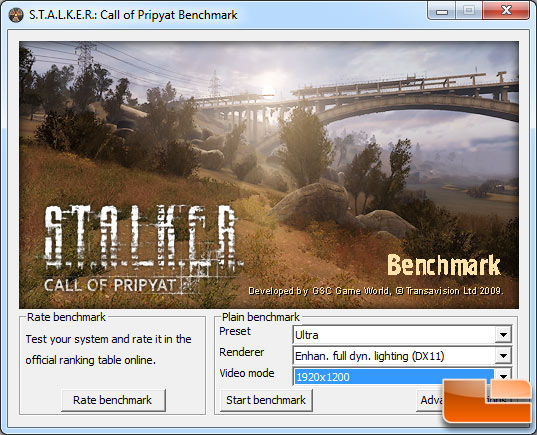
The game S.T.A.L.K.E.R.: CoP has no internal benchmarking tools built into the game engine, but they do have a standalone benchmark available that we used for our testing purposes. The screen capture above shows the main window of the benchmark with our settings. Notice we are running Enhanced Full Dynamic Lighting “DX11” as our renderer.
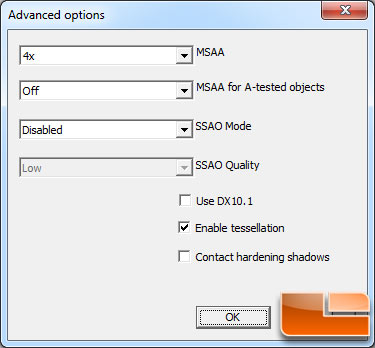
Under the advanced settings we enabled tessellation and 4x MSAA. We didn’t enable ambient occlusion as we wanted to use these test settings for mainstream cards down the road and these settings should be tough enough to stress the Radeon HD 5000 series cards.
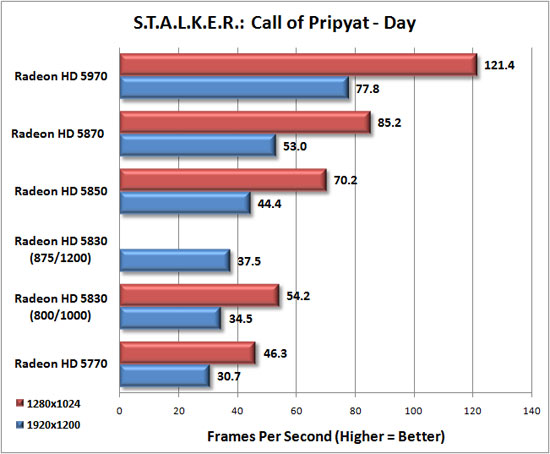
The benchmark gives you results for different lighting scenarios and the easiest on graphics cards are the ‘day’ settings, so we will start there. As you can see, the all of the cards were able to average above 30FPS, which is great to see. The Radeon HD 5830 was found to be ~15% slower than a Radeon HD 5850, but was ~18% faster than the Radeon HD 5770 at a resolution of 1920×1200. Just for fun we included our overclocking results at 1920×1200. You’ll notice with the Radeon HD 5830 overclocked to as high as ATI Overdrive allows (875MHz on the 1120 stream processors and 1200MHz on the GDDR5) it was still unable to reach the same level of performance that the Radeon HD 5850 has with 1440 stream processors at just 725MHz.
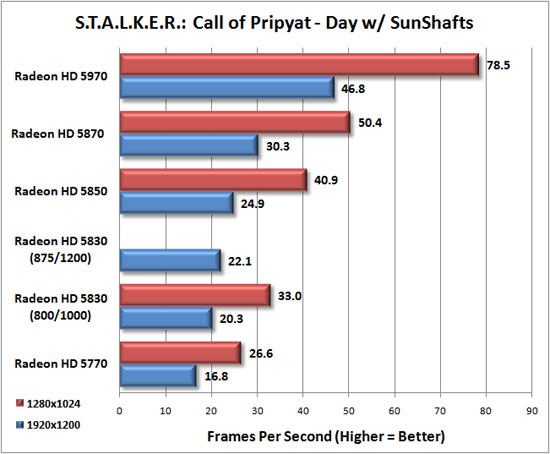
The hardest test run on this benchmark was a scene called ‘SunShafts’ and all the cards took a drastic performance hit. Only the Radeon HD 5870 and Radeon HD 5970 were able to stay above the 30FPS mark at 1920×1200. The Radeon HD 5830 was able to keep above the 30 FPS mark at 1280 x 1024, but fell to just 22 FPS at 1920 x 1200.

Comments are closed.